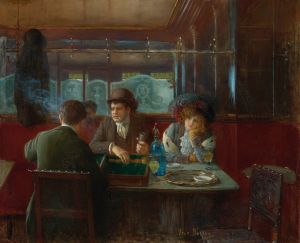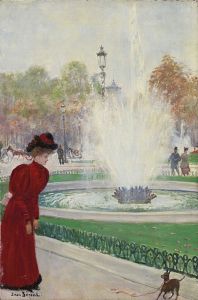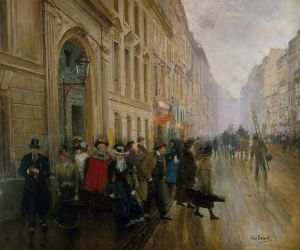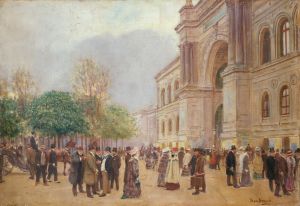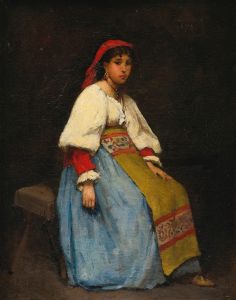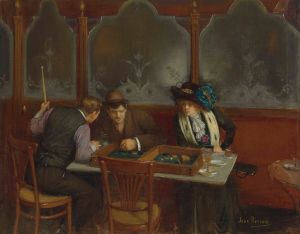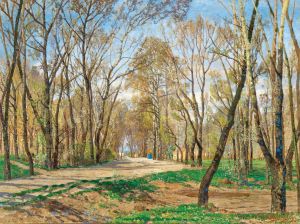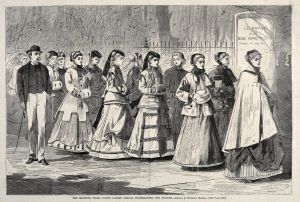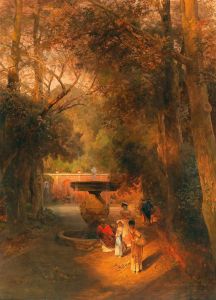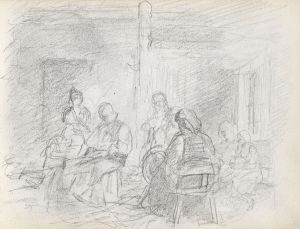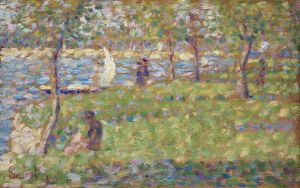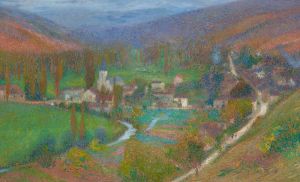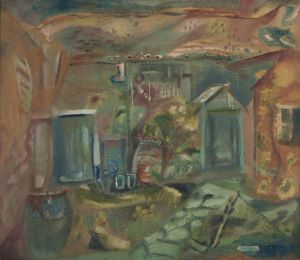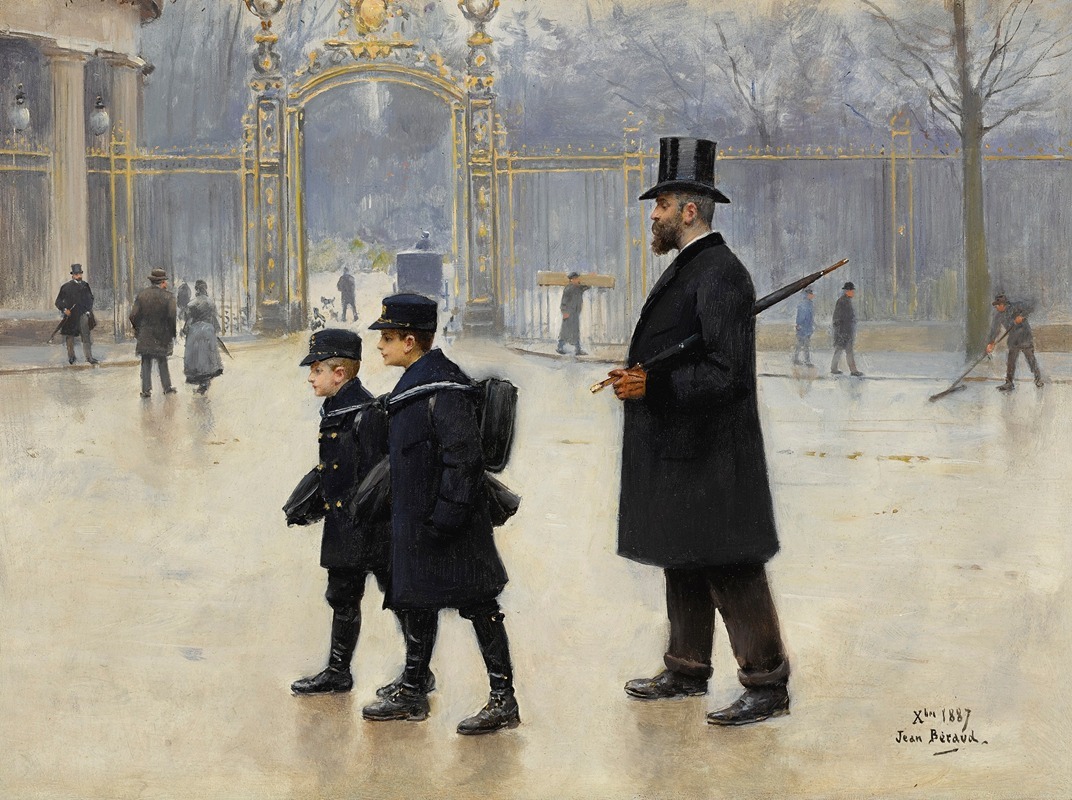
Le Parc Monceau
A hand-painted replica of Jean Béraud’s masterpiece Le Parc Monceau, meticulously crafted by professional artists to capture the true essence of the original. Each piece is created with museum-quality canvas and rare mineral pigments, carefully painted by experienced artists with delicate brushstrokes and rich, layered colors to perfectly recreate the texture of the original artwork. Unlike machine-printed reproductions, this hand-painted version brings the painting to life, infused with the artist’s emotions and skill in every stroke. Whether for personal collection or home decoration, it instantly elevates the artistic atmosphere of any space.
Jean Béraud was a notable French painter renowned for his depictions of Parisian life during the Belle Époque. One of his works, "Le Parc Monceau," captures the essence of this vibrant period through its portrayal of a popular public space in Paris. Béraud, born in 1849 in Saint Petersburg, Russia, moved to Paris with his family after the death of his father. He initially studied law but later turned to painting, studying under Léon Bonnat. Béraud became known for his detailed and lively scenes of Paris, often focusing on the city's bustling streets and elegant social gatherings.
"Le Parc Monceau" is a testament to Béraud's keen observation and ability to capture the spirit of Parisian society. Parc Monceau itself is a public park located in the 8th arrondissement of Paris, known for its picturesque landscape and eclectic architectural features. The park was originally established in the late 18th century by Philippe d'Orléans, Duke of Chartres, and underwent several transformations before becoming a public park in 1860 under the direction of Baron Haussmann.
In Béraud's painting, the viewer is presented with a scene that reflects the leisurely activities of the Parisian bourgeoisie. The artist's attention to detail is evident in the depiction of the park's lush greenery, the fashionable attire of the figures, and the overall atmosphere of relaxation and enjoyment. Béraud's style is characterized by his precise brushwork and the use of light to create a sense of immediacy and realism. His paintings often include elements of humor and social commentary, subtly critiquing the customs and behaviors of his subjects.
"Le Parc Monceau" exemplifies Béraud's ability to capture the nuances of Parisian life. The painting likely features a variety of figures engaged in different activities, such as strolling, conversing, or simply enjoying the serene environment. Béraud's work is often compared to that of his contemporaries, such as Edgar Degas and Édouard Manet, who also focused on modern life and the changing urban landscape. However, Béraud's unique approach lies in his meticulous attention to the details of fashion and social interaction, which provides a vivid snapshot of the era.
Throughout his career, Béraud exhibited his works at the Salon de Paris and gained considerable recognition for his contributions to the genre of urban scenes. His paintings are celebrated for their historical accuracy and their ability to convey the dynamic atmosphere of Paris during a time of significant cultural and social change. "Le Parc Monceau," like many of Béraud's works, serves as both a work of art and a historical document, offering insight into the daily lives and leisure activities of Parisians in the late 19th century.
Today, Jean Béraud's paintings, including "Le Parc Monceau," are held in various public and private collections, appreciated for their artistic merit and their portrayal of a bygone era. His work continues to be studied and admired for its contribution to the understanding of Parisian society and the broader context of 19th-century art.





